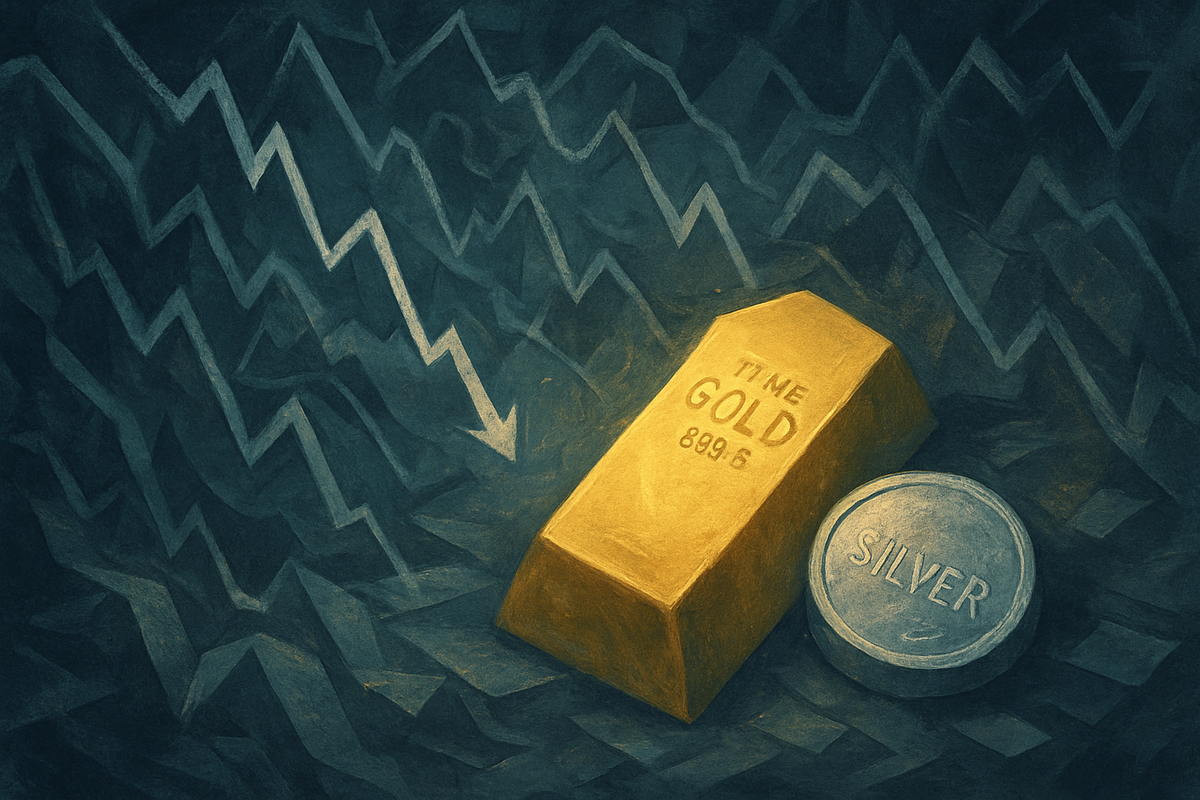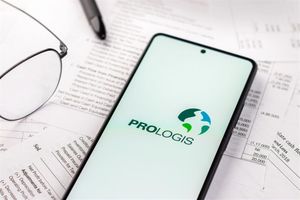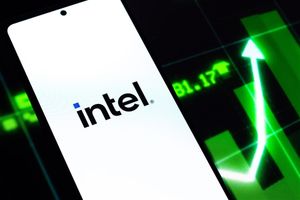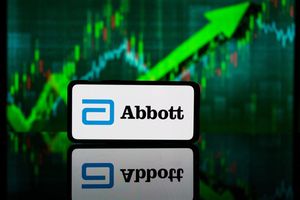
As of October 17, 2025, global financial markets are in the throes of significant turbulence, grappling with an intricate web of escalating geopolitical tensions, persistent economic uncertainties, and burgeoning credit concerns. This pervasive sense of unease has sent investors scrambling for safe-haven assets, catapulting gold and silver to unprecedented price levels. Gold has surged past the $4,300 per ounce mark, while silver has emphatically broken through $54 per ounce, reaffirming their historical roles as crucial protectors of wealth in turbulent times.
The immediate implications for investors are clear: a pronounced "risk-off" sentiment dominates, leading to a flight to safety. With equity markets experiencing sell-offs and concerns about potential bubbles in sectors like AI, capital is actively seeking refuge. This environment underscores the critical need for caution, diversification, and a deep understanding of underlying risks, positioning precious metals as an indispensable component for safeguarding portfolios against the prevailing instability.
The Unprecedented Ascent of Precious Metals
The current market landscape, as of October 17, 2025, is defined by a confluence of factors that have propelled gold and silver into the investment spotlight. Geopolitical tensions, including intensified trade friction between major global powers and ongoing conflicts in the Middle East and Europe, serve as a primary catalyst, fostering a pervasive sense of global instability. Economically, persistent inflation concerns, the specter of government shutdowns, and an anticipated slowdown in global growth (projected at 3.2% for 2025 and 3.1% for 2026 by the IMF) further fuel investor apprehension. Adding to the jitters are emerging vulnerabilities within the private credit market and a significant U.S. bankruptcy, contributing to wider credit spreads and a palpable sense of unease.
Gold, the quintessential safe-haven asset, has seen its value surge dramatically. Its intrinsic characteristics—economic stability and crisis resilience, its role as an inflation and currency hedge, and its diversification benefits—make it an indispensable asset during such times. Unlike fiat currencies, gold's intrinsic value remains resilient, preserving purchasing power and offering protection against currency debasement. Furthermore, strong central bank demand, particularly from emerging markets like China, India, and Turkey, which are accumulating gold at the fastest rate in decades, provides a structural floor beneath prices. The expectation of further Federal Reserve rate cuts, weakening the U.S. dollar and reducing the opportunity cost of holding non-yielding assets, has only amplified gold's allure, pushing its price beyond $4,300 per ounce.
Silver, while sharing many of gold's safe-haven qualities, presents a unique dynamic due to its dual role as both a precious metal and a critical industrial commodity. It acts as a store of value, an inflation hedge, and a portfolio diversifier, often seen as a "higher beta" version of an inflation hedge, potentially offering larger gains during upward market movements. The current unprecedented surge in silver, hitting a record $54.45 per ounce, is driven by acute physical shortages and tight liquidity in major trading hubs. This supply deficit, now in its fifth consecutive year, is exacerbated by the fact that most silver is a byproduct of mining other metals, making it difficult to quickly ramp up production. Simultaneously, robust industrial demand from the solar photovoltaic sector, electronics, electric vehicles, and defense industries, fueled by the global push for green infrastructure and decarbonization, is creating a perfect storm for silver prices. The combination of monetary policy expectations, inflation hedging demand, and a weaker U.S. dollar, mirrored in gold's drivers, further solidifies silver's bullish momentum.
Winners and Losers in the Precious Metal Rush
The unprecedented surge in gold and silver prices, as observed on October 17, 2025, is creating a highly favorable environment for public companies across the precious metals value chain, from miners to streaming companies and ETF providers. This rally is translating into expanded profit margins, robust stock performance, and strategic shifts aimed at capitalizing on the strong market conditions.
Major gold mining companies are experiencing significantly expanded profit margins. With production costs remaining relatively stable in the short term, higher commodity prices directly translate into increased revenues and substantially boosted profitability. This operational leverage means that even a small percentage increase in metal prices can lead to a much larger rise in earnings, potentially 20-40% or more for efficient companies with existing mines. Companies like Newmont Corporation (NYSE: NEM), the world's largest gold producer, and Barrick Gold Corporation (NYSE: GOLD), known for its "Tier One" mining assets, are prime beneficiaries. Agnico Eagle Mines (NYSE: AEM) and Alamos Gold (NYSE: AGI) are also seeing their profitability soar, with Alamos Gold reporting a 110% year-on-year increase in adjusted net earnings in Q4 2024, despite only a 7% rise in production, purely due to higher realized gold prices. These companies are likely to see their stock prices continue to outperform, as mining stocks often offer a leveraged play on the physical metal's price movements.
Similarly, silver producers are reaping substantial rewards. Entities such as Pan American Silver Corp. (NASDAQ: PAAS), among the world's largest primary silver producers, and First Majestic Silver Corp. (NYSE: AG), a pure-play silver miner, are benefiting immensely from the record high silver prices. Fresnillo plc (LSE: FRES), recognized as the world's largest primary silver producer, and Hecla Mining Company (NYSE: HL), America's oldest and largest silver producer, are also seeing significant boosts to their bottom lines. The acute physical shortages and robust industrial demand for silver are ensuring that these miners can command premium prices for their output. Hindustan Zinc, a major silver producer in India, has already reported its highest-ever revenue and earnings for a September quarter, boosted by surging silver prices.
Beyond direct miners, streaming and royalty companies are also immense beneficiaries. Entities like Wheaton Precious Metals Corp. (NYSE: WPM) and Franco-Nevada Corporation (NYSE: FNV) operate on business models that involve purchasing metals at a fixed price or receiving a percentage of production as a royalty. When gold and silver prices rise, the value of their acquired metals or royalty streams skyrockets, leading to significant increases in their profitability and stock valuations. These companies generally present a lower risk profile compared to direct mining companies, as they are less exposed to operational challenges and capital cost overruns. Furthermore, investment vehicles like SPDR Gold Shares (NYSE: GLD), iShares Gold Trust (NYSE: IAU), and iShares Silver Trust (NYSE: SLV), which hold physical bullion, directly reflect the appreciation in spot prices, offering investors a straightforward way to participate in the metals' rally. ETFs focusing on miners, such as the VanEck Vectors Gold Miners ETF (NYSE: GDX) and the Global X Silver Miners ETF (NYSE: SIL), are also experiencing amplified positive performance due to the operational leverage of their underlying holdings.
Wider Implications of the Precious Metal Surge
The current rally in gold and silver is not an isolated event but rather a significant indicator of broader industry trends and carries substantial ripple effects across the financial landscape. Its sustained momentum underscores a fundamental shift in investor sentiment, reflecting deep-seated concerns that extend beyond immediate market fluctuations.
This surge fits squarely into a broader trend of increasing demand for tangible assets and commodities as a hedge against inflation and currency debasement. In an era where central banks globally are grappling with persistent inflationary pressures and the potential for continued monetary easing, the appeal of assets with intrinsic value is amplified. The robust demand for silver, driven by the green energy transition—specifically in solar photovoltaics, electric vehicles, and electronics—highlights a structural shift where industrial consumption is a powerful, long-term driver alongside its monetary role. This dual demand profile makes silver particularly resilient and positions it uniquely within the broader commodity complex. The rally also signals an accelerated "risk-off" sentiment across global markets, leading to a re-evaluation of portfolio diversification. Major financial institutions are now openly advocating for a "60% equities, 20% gold, 20% bonds" (60/20/20) model, departing from the traditional 60/40 (equities/bonds) structure, indicating a long-term strategic rebalancing.
The ripple effects of this precious metal rally are extensive. It could draw capital away from traditional equity and bond markets, particularly those perceived as overvalued or vulnerable to economic headwinds. This capital reallocation could contribute to further volatility in other asset classes. For sectors heavily reliant on silver as an industrial input, such as electronics manufacturing or solar panel production, the sustained high prices could lead to increased production costs, potentially impacting profitability and consumer prices. Conversely, the increased profitability of mining companies could stimulate investment in exploration and development, potentially leading to new discoveries and job creation in mining regions. The de-dollarization efforts by central banks, driven by gold purchases, could also have long-term implications for the international monetary system and the U.S. dollar's status as a global reserve currency.
Regulatory and policy implications are also noteworthy. Governments in resource-rich nations may consider revising royalty structures or taxation policies to capture a larger share of the increased profits from mining. There could also be increased scrutiny on environmental and social governance (ESG) practices within the mining sector. Anticipated tariff measures, particularly from the U.S. administration, could significantly influence global trade flows and commodity prices, potentially exacerbating supply constraints and leading to higher premiums. Historically, periods of extreme market uncertainty, such as the 1970s oil shocks or the 2008 financial crisis, have seen similar flights to gold. Gold consistently maintains its value during recessions and geopolitical turmoil, often outperforming stocks and bonds. Silver, while more volatile due to its industrial uses, also tends to recover strongly after initial dips in crises, particularly when industrial demand remains robust. The current scenario, however, is unique due to the confluence of geopolitical, economic, and industrial demand factors, suggesting a potentially more sustained and structurally driven precious metal bull market.
What Comes Next: Navigating the Future of Precious Metals
The current bullish momentum in gold and silver appears poised to continue in both the short and long term, albeit with inherent volatility. Analysts widely anticipate gold could test the $5,000 per ounce mark and silver could push through $60 per ounce in the next 12 to 18 months, driven by persistent geopolitical tensions, ongoing economic uncertainties, and continued central bank demand. However, investors must remain vigilant to potential strategic pivots and market challenges.
In the short term, the primary drivers will likely remain the prevailing "risk-off" sentiment, any further escalation of global conflicts, and the trajectory of interest rates. While Federal Reserve rate cuts have already occurred and more are anticipated, any unexpected shifts in monetary policy—such as a faster-than-expected decline in inflation leading to a more hawkish stance—could introduce downward pressure. A strengthening U.S. dollar, although currently weak, also poses a short-term risk, as it makes dollar-denominated precious metals more expensive for international buyers. For silver, the delicate balance between industrial demand and supply deficits will be crucial; any significant slowdown in global manufacturing or a sudden increase in supply could impact its price more acutely than gold.
Looking further ahead, the long-term outlook for gold and silver remains robust. Structural factors such as de-dollarization efforts by various nations, continued central bank diversification into gold, and the burgeoning demand for silver in green technologies are powerful tailwinds. The increasing adoption of electric vehicles, solar power, and advanced electronics ensures a sustained industrial appetite for silver, creating a floor for its price that is less reliant purely on investment demand. Potential strategic adaptations for investors include maintaining a diversified portfolio that judiciously allocates to precious metals, employing dollar-cost averaging to mitigate volatility, and carefully considering the balance between physical assets (bars and coins) and paper assets (ETFs, mining stocks). Physical ownership offers direct exposure and eliminates counterparty risk, while ETFs provide liquidity and ease of trading, and mining stocks offer leveraged exposure to price movements.
Potential scenarios range from a continued steady ascent, fueled by ongoing instability, to more volatile periods marked by sharp corrections followed by rebounds. A "black swan" event, such as a major financial crisis or an intensified global conflict, could trigger an even more aggressive flight to safety, propelling prices to unprecedented highs. Conversely, a rapid resolution of geopolitical tensions or a significant improvement in global economic stability could temper the rally. Market opportunities may emerge in specific segments, such as junior mining companies with promising exploration projects, or in advanced streaming and royalty deals that offer attractive risk-adjusted returns. The key for investors will be to adapt their strategies based on evolving market conditions, maintaining a long-term perspective while being prepared for short-term fluctuations.
Wrapping Up: A Resilient Path Forward
The current financial landscape, marked by significant volatility and uncertainty, unequivocally underscores the enduring significance of gold and silver as essential components of a well-diversified investment portfolio. As of October 17, 2025, these precious metals have demonstrated their unparalleled ability to act as safe havens, preserving and even enhancing wealth amidst geopolitical turbulence, economic anxieties, and inflationary pressures. The record-breaking prices for both gold and silver are not merely speculative surges but are underpinned by fundamental drivers, including robust investor demand for safety, strategic central bank accumulation, and for silver, a critical and growing industrial consumption that is outstripping supply.
Moving forward, the market for precious metals appears poised for continued strength. The confluence of factors driving their recent ascent—from persistent geopolitical risks and inflation hedging to the structural demand for silver in green technologies—suggests that their role as vital hedges against systemic risks will only grow. Investors should recognize that while gold offers stability and a direct hedge against monetary debasement, silver provides a more dynamic, higher-beta opportunity, benefiting from both monetary and industrial tailwinds. The operational leverage of mining companies and the strategic advantages of streaming and royalty firms mean that these equities can offer amplified returns in a rising price environment, though with commensurately higher risk.
The lasting impact of this period of heightened precious metal demand will likely be a re-evaluation of portfolio construction across the investment community. The events of 2025 serve as a powerful reminder of the importance of diversifying beyond traditional equities and bonds, particularly in an environment where historical correlations are shifting. For investors, the coming months will require diligent monitoring of key indicators: the trajectory of global inflation, central bank monetary policy decisions, the evolution of geopolitical conflicts, and the supply-demand dynamics within the industrial silver market. While the path may be volatile, the fundamental case for gold and silver as resilient assets in an uncertain world remains exceptionally strong.
This content is intended for informational purposes only and is not financial advice





